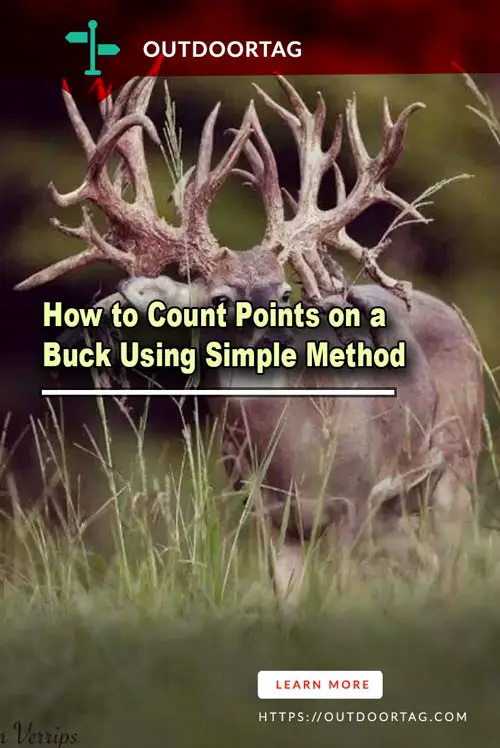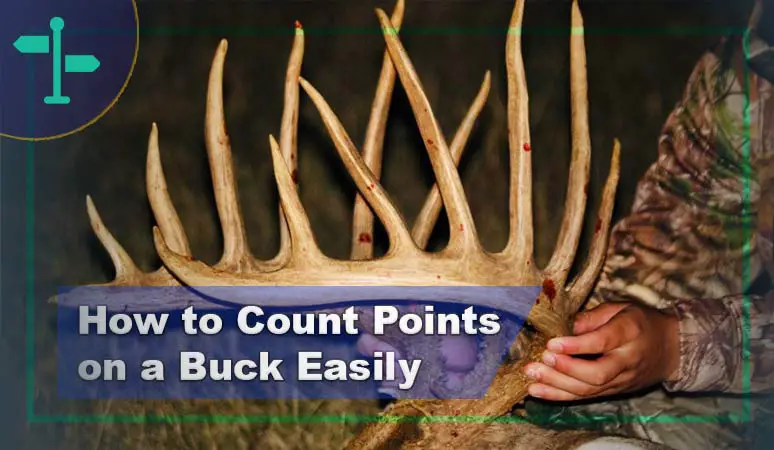During the rutting season, it’s common to have deer everywhere around you. This is the only time of the whole year when males get to demonstrate their antlers skills. And so, several conversations on buck having how many points come to life. However, the whole points counting thing on buck can sound complex for some people. And so, let’s have a deep discussion on how to count points on a buck with today’s special guide.
Here’s How to Count Points on a Buck Using Simple Method
When you deal with younger bucks, the whole counting point things become a comfortable deal to do. There’s more development with time as well as feature acquiring with each new shedding. And so, the points start to upsurge as they become huger plus wider. The overall quality of antlers can be decided with this counting point method. Keep on Reading…

Let’s Start with Knowing About the Best Method
Counting points on a buck can have several methods but we need the best one out there for someone who has no clue. In that way, there will be fewer mistakes and more ease of doing it. Counting only on antler’s one side can be an option for a few hunters. There are also those who want to do the counting on both sides.
If we look a little bit back, then researchers say that veteran hunters are more likely to count points from antler’s both sides. That’s because points number can be unequal most of the time. There’s a good probability of getting an odd number of points with a buck on its antler. So, the more favorable option has to be this as then there’s more chance of grabbing correct points figure on rack.
If a number of points seem to be equal on both sides, then the other method is also fine to use. However, that’s the only time when the method will work perfectly for you. And otherwise, there will be a fear of leaving a few points out of counting.
Understanding Acceptable Point on Buck’s Antler Through How Long It Should Be.
Now you may find a point on buck’s antler but not each of those is worthy to be accepted as your counted points. There are mere protrusions ones here that are not well matching with main points. And so, you should not consider counting those.
By having an eye on each point’s length, you can easily understand the rating of antler’s point. As it’s one of the main features that help in this concept. So do the ranking of each protrusion by measuring length of its. For it to be valid, the length must be at least one inch long. It’s from the base of the supporting antler. Also, the width should be smaller than the length.
If a protrusion fulfills these basic characteristics, it must be a valid point on the buck’s rack that you should consider counting.
Determining the Total Points Count
So finally, we are here to the segment of discussing the method that you can use for determining points on a buck.
Validating Scores
Start from the base of every protrusion for measuring. This is the spot where they stay fixed to the main beams with their tips. If the protrusion measures more than an inch, count it as a point and record it.
Main Beams’ End Tips Are Points
On the antler’s main beams, each tip will be qualified as a point for counting. This is in fact, your first area to start counting points with. You can choose to not but more preferable results come out this way. After this, you can go ahead and measure other protrusions. The ones that are not directly in contact with the main beam.
Then Move to Abnormal Points
These are also called the non-typical points. Basically, these points emanated from another point. And another point will be connected with the main beam. Following the same method of measuring protrusions, you need to count these too. The part where it meets other points is favorable for starting measurement. Don’t confuse them with the ones that are coming from the base of the main beam.
In Case of Whitetail Deer
Now things are a bit different when you are trying to count points on a whitetail buck’s antler. If this is the case then there’s a need for adding brow tines into your main record of total points. However, with a mule, you don’t need to worry much about this. The same goes with any other sort of deer buck. Including the brow tines is not necessary for the main record.
In Case of Red Stag
When it comes to Red Stag, things start to get pretty official. With red stag being such a high-value trophy animal, there are very official and in-depth checks and balances when it comes to counting points and grading. With stag antlers being much more intricate, having them graded includes a process of identifying beams, tips, tines, crowns, and several other factors, which all factor into an overall score called an SCI score. While the Red Stag is believed to have originally been an eastern hemisphere species, most of the leading SCI scores come from Argentina red stag hunts, specifically the La Pampa and Patagonia regions of Argentina.
Get the Sum Ready
Now that you have all the essentials including totals of abnormal pints, protrusions, and main tips, the only thing left to do is addition. You need a total number of points from your gathered information and there you have the exact points we were looking for.
Outdoor Speak: Are you into a more daring adventure? Do you find counting points on a buck childish and amateurish? Hold on to your antlers and we’ll take you to the wildest (and scariest) in-your-face experience you could ever imagine — What Is The Most Dangerous Animal In The World.
Conclusion
And just like that, we can say already the whole method of how to count points on a buck is not very difficult. It just requires you to know certain things beforehand and be careful with the counting. If you manage to do these two main things then the chances of ending up with a wrong outcome are very low.
Also, no matter what method you go with for counting points on a buck, things will seem to become easier as you repeatedly do it. So, if the ending points are not appropriate for first time, work on them, and make better results next time. Keep on trying until this becomes a usual affair to you, best of luck.

